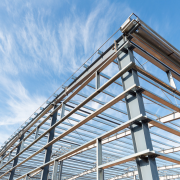Chicago’s roofing market is competitive, seasonal, and increasingly digital-first. Homeowners don’t just ask a neighbor anymore, they Google, compare, and decide in minutes from a phone. That’s why the right mix of web design and marketing can flip casual visitors into booked inspections fast. Drawing on what leading teams like Comrade Digital Marketing, an experienced Chicago Web Design Agency, see across high-performing contractor sites, this guide unpacks the trends moving the needle in 2025: user-first design, speed for SEO, trust-building visuals, smarter ads, reviews that convert, mobile UX, and tight integration with Google Business Profile.
Why user-friendly design impacts roofing leads in 2025
Great roofing websites don’t “look pretty” for the sake of it, they reduce friction so a worried homeowner can get help, now. In 2025, user-friendly design is the biggest lever for lead volume and quality.
What user-first looks like
- Clear hierarchy: A concise headline (service + area), a subhead that speaks to common pain (leaks, hail damage, insurance claims), and an unmistakable CTA above the fold.
- Action paths: Sticky “Call Now” and “Book Inspection” buttons, with click-to-call and SMS options for busy homeowners on-site.
- Short, smart forms: Name, ZIP, preferred time, and an upload for roof photos. Anything more reduces completion rates.
- Instant reassurance: Licenses, insurance, warranties, and badges (e.g., GAF Master Elite, Owens Corning Preferred) visible without scrolling.
- Local proof: “Serving Bucktown, Lakeview, Hyde Park, and nearby” plus project cards mapped to neighborhoods.
Accessibility and inclusivity
- ADA-friendly contrast, legible type, keyboard navigation, and descriptive alt text aren’t just ethical, they expand conversions.
- Bilingual content (English/Spanish) boosts reach across Chicagoland communities.
Continuous improvement
Teams like Comrade Digital Marketing routinely pair heatmaps and call tracking with A/B tests, tuning hero headlines, CTA copy (“Same-Day Roof Check”), and form length. The pattern holds: less friction, more booked inspections.
SEO and site speed: the hidden roofing sales driver
Search visibility still captures the highest-intent traffic, but speed and technical health now make or break rankings and conversions.
Core Web Vitals matter more in 2025
Google’s current signals emphasize:
- LCP (Largest Contentful Paint) under ~2.5s
- INP (Interaction to Next Paint) under ~200ms
- CLS (Cumulative Layout Shift) under ~0.1
Roofing visitors bounce fast when pages lag, especially on mobile data in older buildings. Faster sites rank better and convert more.
Technical and on-page essentials
- Lightweight build: Avoid bloated themes, compress CSS/JS, and defer non-critical scripts (chat, widgets) until interaction.
- Image discipline: Serve WebP/AVIF, lazy-load below-the-fold media, and use responsive srcset for drone shots and galleries.
- Architecture: Create service pages for “Roof Repair,” “Storm Damage,” “Flat Roof (EPDM/TPO),” and neighborhood/city pages targeting Chicagoland (e.g., “Roofing in Logan Square”). Interlink logically.
- Content depth: Address Chicago specifics, permit considerations, lake-effect snow prep, ice dam prevention, and insurance coordination.
- Structured data: LocalBusiness / RoofingContractor schema, Service schema, and AggregateRating where applicable, to enhance rich results.
Helpful content that answers real questions (“How fast can you tarp a leak in winter?”) plus a snappy site often outruns bigger competitors. A seasoned Chicago Web Design Agency will audit both content and CWV early instead of tacking performance on later.
Using imagery and trust signals for local homeowners
Roofing is tactile. Seeing real crews, real shingles, and real Chicago roofs builds instant trust.
Visuals that persuade
- Before/after sliders: Especially for hail damage and flat-to-pitch conversions.
- Crew-in-action shots: Safety gear, winter procedures, and clean job sites signal professionalism.
- Neighborhood context: Photos labeled “Albany Park 2-flat” or “Wicker Park Victorian” help homeowners self-identify.
- Short site videos: 30–60 seconds on what to expect during an inspection or how financing works.
Trust signals that reduce risk
- Certifications and awards: Prominently show manufacturer badges and local associations.
- Warranty clarity: Side-by-side breakdown of workmanship vs. manufacturer coverage.
- Insurance and licensing: Plain-English proof with renewal dates.
- Financing options: Simple explainer with pre-qualification steps.
Add descriptive alt text for accessibility and SEO: skip gimmicks like “geotagging images for ranking.” It’s consistency, clarity, and authenticity that move the needle.
Digital ad strategies roofing firms are adopting in Chicago
When storms hit, paid media turns urgency into booked inspections. The best-performing roofing advertisers in Chicago combine precision targeting with conversion-focused landing pages.
What’s working now
- Google Local Services Ads (LSA): Pay-per-lead placements with “Google Guaranteed” trust. Maintain fast response times and dispute unqualified leads.
- Search + Performance Max: Structure campaigns by intent (“emergency roof repair,” “flat roof replacement,” “hail damage inspection”) with strong negatives to filter out DIY and commercial-only queries.
- Call-only and call extensions: Many homeowners want to talk, not type. Use dynamic number insertion and record calls (with disclosure) to score quality.
- Meta and Nextdoor: Neighborhood-centric creatives (“Serving West Loop and Near North Side today”) and short videos of on-site inspections.
- Geospatial tactics: Radius targeting around affected ZIPs after hail or high-wind events, paired with tailored landing pages and clear availability.
Measurement and creative
- Track beyond the click: Import closed-won revenue or job values from CRM to optimize for profitable leads, not just cheap ones.
- Offers that resonate: “Same-day tarping,” “Free photo report for insurance,” or “0% APR promotional financing for qualified homeowners.”
Agencies like Comrade Digital Marketing often ship rapid-response playbooks, prebuilt landing pages, storm-ready ad copy, and on-call budgets, so roofing clients can scale within hours, not weeks.
Customer reviews shaping trust in roofing websites
Reviews are the modern referral. In roofing, where stakes and spend are high, recent, local feedback is decisive.
Build a steady stream
- Ask at the right moment: Right after the final walkthrough and photo handoff, when satisfaction peaks.
- Make it effortless: QR codes on completion sheets, SMS links, and a follow-up email with direct Google review link (with UTM to attribute).
- Automate without “gating”: Don’t filter unhappy customers before sending them to Google: it violates platform policies.
Showcase and respond
- On-site display: Pull in your latest Google ratings with review schema for rich snippets, and curate service-page testimonials by job type.
- Owner replies: Thank happy reviewers and address issues with specifics (“We’ve scheduled a warranty visit Friday at 10am”). Thoughtful responses convert lurkers.
A cadence of authentic reviews tied to Chicago neighborhoods (“Ravenswood condo roof repair”) reads as real, and that authenticity boosts both SEO and conversions.
Responsive web layouts for mobile-savvy property owners
Most roofing searches in Chicago happen on phones, often from a chilly sidewalk staring at a leak. Responsive design isn’t optional: it’s your first impression.
Mobile UX that wins calls
- Sticky action bar: “Call,” “Text,” and “Book” always visible. Big tap targets (48x48px+), and click-to-call everywhere a number appears.
- Speed on cellular: Lightweight fonts, compressed images, and server-side caching/CDN. Avoid heavy sliders and auto-play video on mobile data.
- Form minimalism: Keep it to essentials: let users add photos from the camera. Offer Apple/Google autofill.
- Clear wayfinding: Simple menus, breadcrumb trails, and a visible service-area link to confirm coverage.
- Helpful microcopy: “We typically respond within 10 minutes.” It sets expectations and reduces bounces.
Consider a streamlined PWA-like experience for offline quotes and push notifications during storm surges, tested carefully to avoid intrusiveness.








Comments